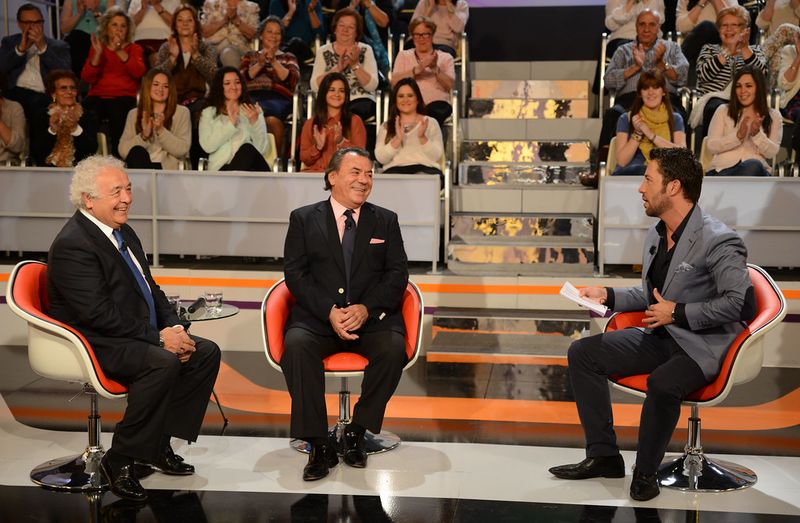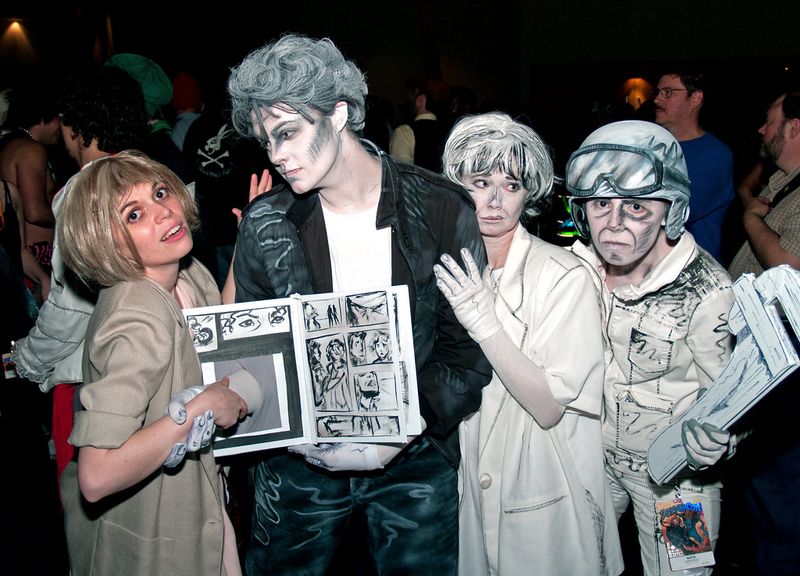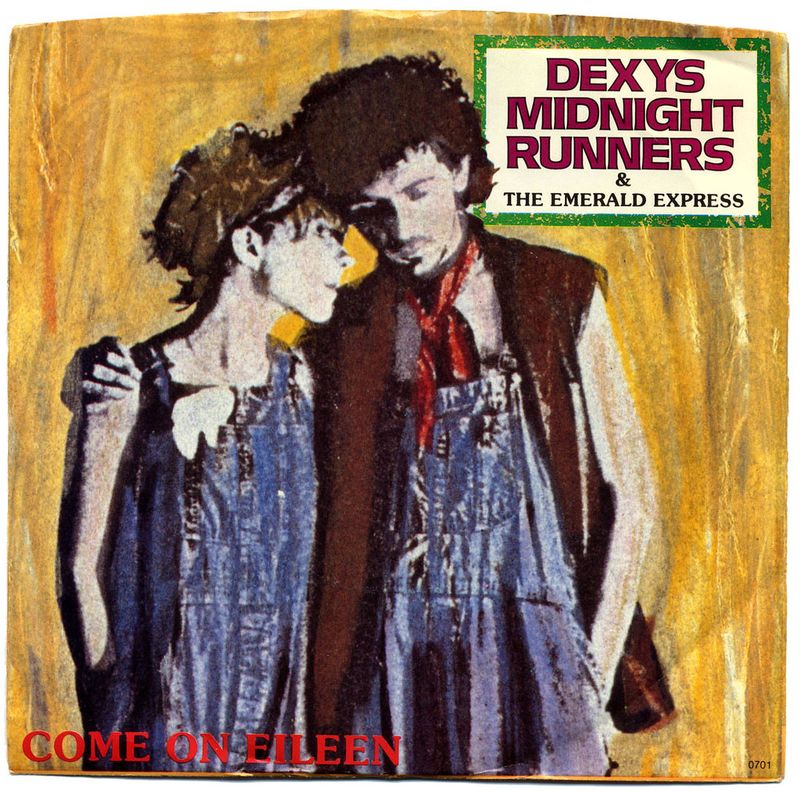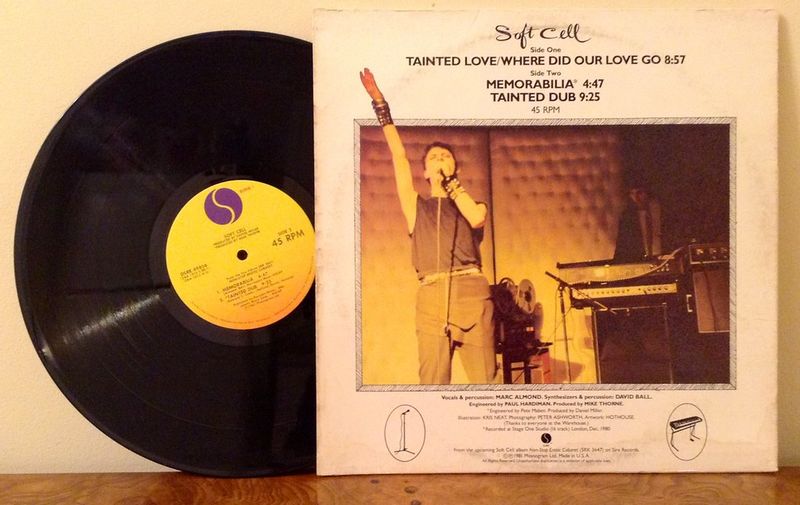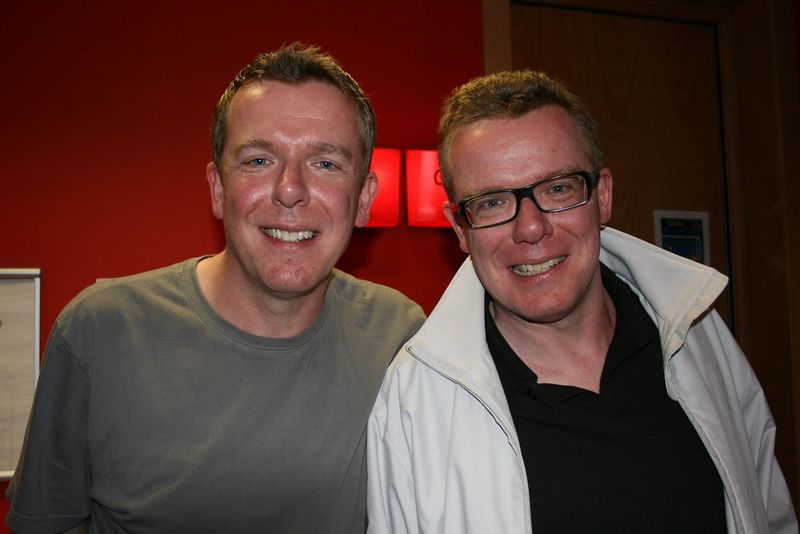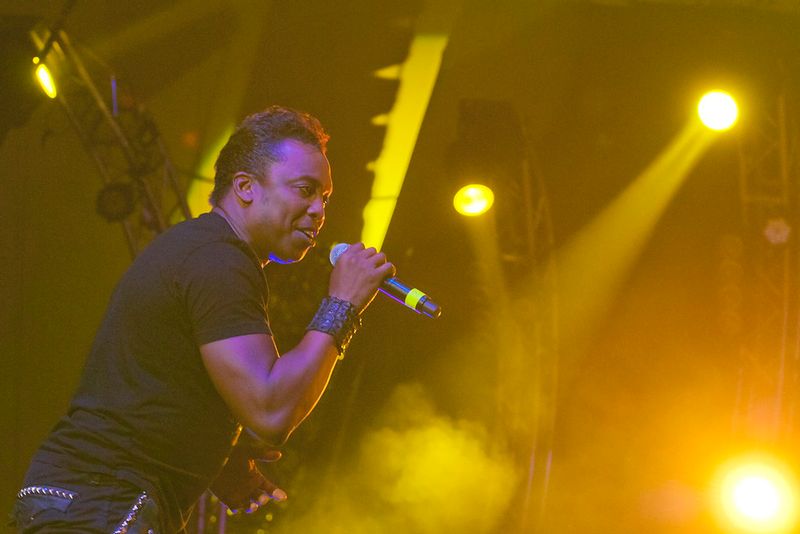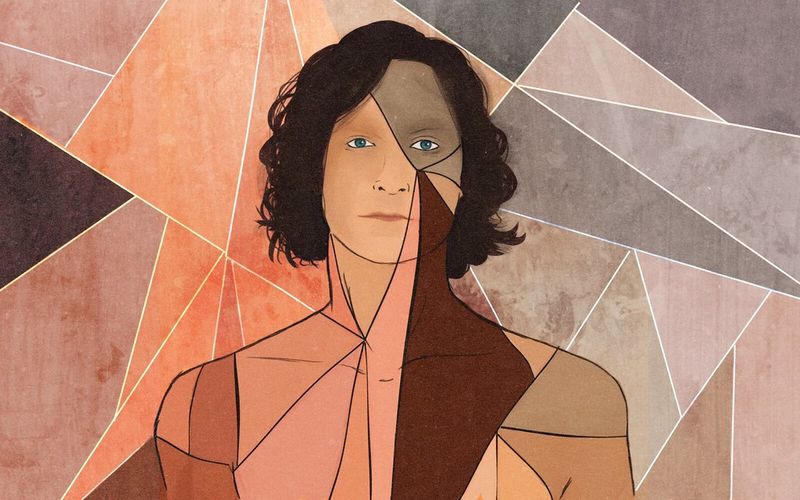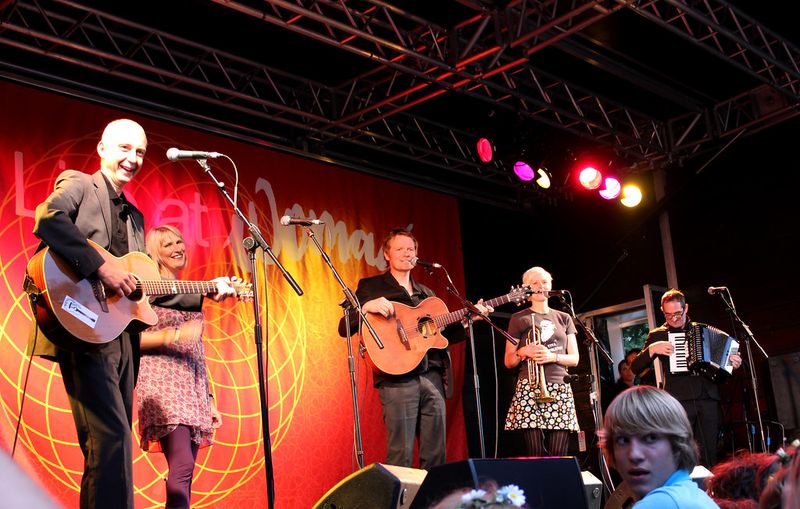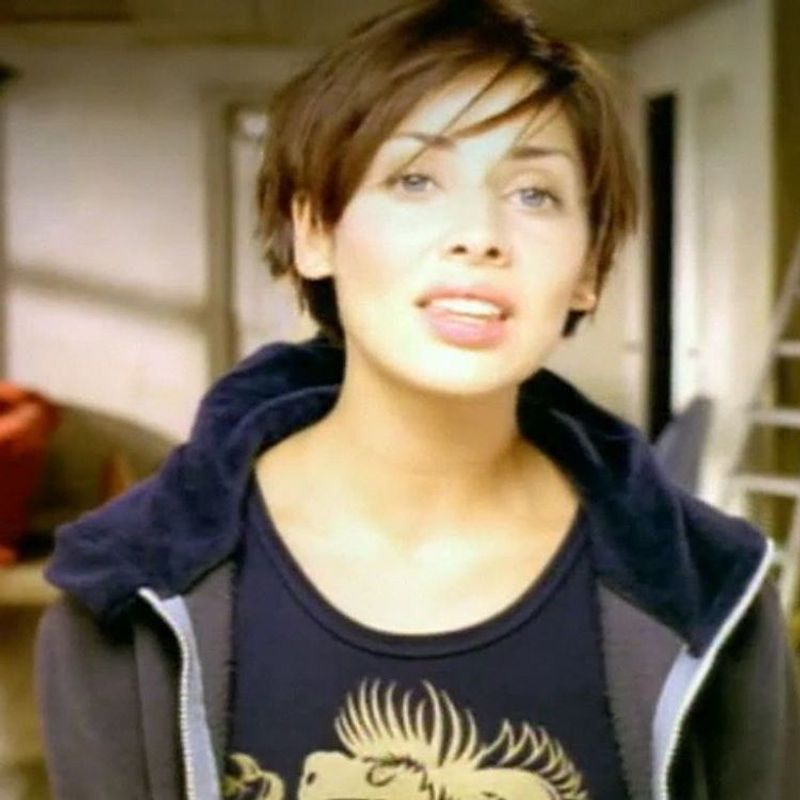Remember those catchy tunes that dominated the airwaves for a few glorious weeks before their creators vanished into obscurity? Even though we might not admit it, many of us still crank up the volume when these songs pop up on the radio. These musical time capsules transport us back to specific moments in our lives, triggering waves of nostalgia. Here’s a roundup of those unforgettable one-hit wonders we all secretly adore.
1. “Macarena” by Los Del Rio
Grandpas and toddlers alike still break into those iconic arm movements when this 1996 Spanish dance track plays. The song spent 14 weeks at number one on Billboard charts, becoming a cultural phenomenon that transcended language barriers.
Wedding receptions and school dances haven’t been the same since this choreographed crowd-pleaser arrived. The simple dance moves—which most people still get wrong—created an inclusive party atmosphere where everyone could participate.
Fun fact: Many dancers had no idea the lyrics (mostly in Spanish) described a woman cheating on her boyfriend with two friends while he was away in the army!
2. “Take On Me” by A-ha
Those synthesizer notes instantly transport listeners back to 1985. The Norwegian band’s breakthrough hit featured a groundbreaking music video with pencil-sketch animation that took 16 weeks to complete, blending the real world with a comic book universe.
Lead singer Morten Harket’s impressive vocal range, especially that impossible falsetto in the chorus, still challenges karaoke enthusiasts worldwide. The song’s infectious energy makes it impossible not to bob your head or tap your feet.
While A-ha continued making music for decades in Europe, American audiences only remember them for this synth-pop masterpiece that still feels fresh almost four decades later.
3. “Come On Eileen” by Dexys Midnight Runners
The infectious fiddle riff and sing-along chorus make this 1982 folk-rock fusion an enduring favorite. Kevin Rowland’s distinctive vocals and the band’s overalls-and-workwear aesthetic created a unique identity that stood out during the early MTV era.
The song’s tempo change—starting moderate, speeding up dramatically, then slowing down before the final sprint—perfectly captures the emotional rollercoaster of young love. Its Celtic influences provided a refreshing alternative to the synthesizer-heavy sound dominating charts at the time.
Most listeners don’t realize the band had several hits in the UK, including “Geno,” but American audiences only embraced this tale about Rowland’s childhood girlfriend.
4. “Tainted Love” by Soft Cell
Marc Almond’s haunting vocals paired with a minimalist electronic backdrop created this unforgettable 1981 hit about toxic relationships. Originally recorded by Gloria Jones in 1964 as a soul song, Soft Cell’s synth-pop reinvention completely transformed the track into something colder and more desperate.
The distinctive synthesizer intro—just five notes—is one of the most recognizable song openings ever. Its influence on electronic music cannot be overstated, helping to pioneer the synthpop genre that would dominate much of the 1980s.
Despite recording several albums, Soft Cell never again reached the same commercial heights in America, though they maintained a devoted following in the UK music scene.
5. “I’m Gonna Be (500 Miles)” by The Proclaimers
Scottish twin brothers Craig and Charlie Reid created this walking anthem that’s become a staple at sporting events, road trips, and weddings. Released in 1988, the song gained massive popularity in America after appearing in the 1993 film “Benny & Joon.”
Their thick Scottish accents, matching glasses, and earnest delivery added authentic charm to a simple declaration of devotion. The repetitive “da da da” chorus proves irresistible for sing-alongs, even for people who can’t understand all the lyrics.
The song’s enduring appeal stems from its genuine emotion—the brothers weren’t trying to be cool or fashionable, just heartfelt. This sincerity resonates across generations who appreciate its straightforward message of commitment.
6. “What Is Love” by Haddaway
Before becoming the soundtrack to the head-bobbing “Night at the Roxbury” sketches on Saturday Night Live, this 1993 Eurodance smash dominated dance floors worldwide. Trinidadian-German artist Haddaway delivered a perfect club anthem with its pulsing beat and philosophical question about love’s nature.
The song’s production epitomizes early 90s dance music—driving synthesizers, soulful vocals, and that unmistakable beat drop that still fills dance floors today. Its simple but profound chorus became instantly quotable, working equally well as a genuine question or ironic commentary.
While Haddaway released several follow-up singles in Europe, American audiences forever associate him with this single track and the comedic head-bobbing it inspired.
7. “Somebody That I Used to Know” by Gotye
Belgian-Australian musician Gotye crafted this hauntingly bitter breakup song featuring New Zealand singer Kimbra. Released in 2011, its distinctive xylophone melody and emotional vocal delivery created an instant classic that felt both modern and timeless.
The song’s innovative music video, showing body paint gradually covering both singers against a blank background, has been viewed over 2 billion times. Its artistic approach perfectly complemented the raw emotional content of the lyrics about a relationship’s painful aftermath.
Despite winning three Grammy Awards including Record of the Year, Gotye (born Wouter De Backer) largely retreated from mainstream success afterward, focusing on experimental projects and his band The Basics instead of capitalizing on his sudden fame.
8. “Mambo No. 5” by Lou Bega
German artist Lou Bega updated Pérez Prado’s 1949 instrumental mambo with catchy lyrics naming various women, creating 1999’s inescapable summer anthem. The brass-heavy track merged big band sounds with modern production, bringing swing music to a new generation long before the neo-swing revival.
Bega’s charismatic delivery and the song’s dance-friendly rhythm made it perfect for weddings and parties. The track’s playful lyrics about romantic pursuits balanced just enough suggestiveness with family-friendly fun to work across all demographics.
Though Bega released several albums afterward, none captured the same global enthusiasm as this reimagined mambo that had everyone counting “1, 2, 3, 4, 5” and naming ladies from their own lives.
9. “Ice Ice Baby” by Vanilla Ice
Robert Van Winkle (aka Vanilla Ice) made hip-hop history with this 1990 track featuring the instantly recognizable bass line borrowed from Queen and David Bowie’s “Under Pressure.” The song became the first rap single to top the Billboard Hot 100, breaking barriers for hip-hop in mainstream music.
His distinctive pompadour haircut, baggy pants, and energetic dancing created an iconic image that defined early 90s pop culture. The lyrics about cruising Miami streets and the catchy chorus made it accessible to suburban kids who memorized every word.
Despite later becoming the punchline of jokes about white rappers, the song’s hook remains undeniably effective—still guaranteed to fill a dance floor when those opening notes play.
10. “Tubthumping” by Chumbawamba
“I get knocked down, but I get up again” became an unlikely anthem of resilience from this British anarchist collective. Released in 1997, the song’s blend of punk ethos, pop hooks, and pub sing-along chorus created an irresistible earworm about perseverance through life’s challenges.
Many listeners never realized the band had been making politically charged music for 15 years before this breakthrough hit. Their message of working-class determination resonated globally, turning a song about drinking and fighting into an inspirational statement.
The track’s unique structure—alternating male and female vocals, whispered verses exploding into shouted choruses—makes it instantly recognizable. Sports teams adopted it as a comeback anthem, ensuring its place in popular culture long after the band disbanded.
11. “Video Killed the Radio Star” by The Buggles
This prophetic 1979 hit about technological change became even more famous as the first music video ever played on MTV when the channel launched in 1981. The Buggles—primarily a studio project of Trevor Horn and Geoff Downes—created a perfect musical time capsule about media evolution.
The song’s futuristic synthesizers and nostalgic lyrics created an ironic commentary on progress replacing tradition. Its memorable chorus and distinctive production sound quintessentially late-70s while paradoxically predicting the video-dominated future of music.
Both band members later joined progressive rock band Yes and had successful production careers, but nothing matched the cultural impact of this single song that literally announced the video age it was describing.
12. “Torn” by Natalie Imbruglia
Australian actress-turned-singer Natalie Imbruglia delivered this perfect pop-rock angst anthem in 1997, though few realized it was actually a cover of Ednaswap’s 1995 original. Her vulnerable yet powerful vocals captured the emotional devastation of realizing a relationship was built on illusions.
The song’s music video—featuring Imbruglia in a sparse apartment with visible set edges breaking the fourth wall—became just as iconic as the track itself. Her pixie haircut and casual sweater created a fashion moment that countless women emulated.
Despite releasing several albums afterward, nothing captured the same magic as this debut single that perfectly balanced raw emotion with radio-friendly production. The track remains a karaoke favorite for anyone wanting to express heartbreak with the perfect amount of drama.

